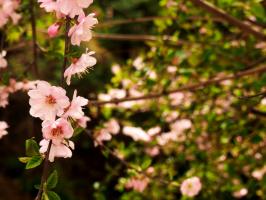Overview of Red Buckeye
Red buckeye (Aesculus pavia) is a small deciduous tree or large shrub that is native to the southeastern United States. It can grow up to 20 feet tall and equally wide, with a rounded shape and multiple stems that emerge from the base of the plant. The tree has attractive red flowers that bloom in the spring and showy fruits that attract wildlife.
The Benefits of Red Buckeye Trees
Red buckeye trees are an excellent choice for landscaping and habitat restoration, as they provide a wide range of benefits. Here are some of the benefits of planting red buckeye trees:
The tree attracts hummingbirds, bees, and butterflies with its nectar-rich flowers, which are an important food source for pollinators.
The showy fruits of the tree contain seeds that provide food for birds and small mammals such as squirrels.
Red buckeye trees are easy to grow and care for, making them an excellent choice for novice gardeners.
The tree is resistant to many pests and diseases, which means that it is low maintenance and requires little to no sprays or treatments.
The tree provides shade and helps to reduce the temperature around it, making it an ideal tree for landscaping areas where the shade is needed.
Red buckeye trees can grow in a wide range of soils and conditions, making them adaptable to a variety of landscapes.
The Drawbacks of Red Buckeye Trees
While there are many benefits of planting red buckeye trees, there are also some drawbacks that should be considered before planting:
The tree can be messy, as it drops its fruits and leaves throughout the season.
The tree can be susceptible to drought and requires regular watering to thrive.
Red buckeye tree is not suitable for planting in areas with heavy foot traffic, as the fallen fruits can become a slipping hazard.
How to Plant and Care for Red Buckeye Trees
If you are considering planting a red buckeye tree, here are some tips on how to get started:
Choose a planting location that receives full or partial sun, with well-draining soil.
Plant the tree in a hole that is twice as wide as the root ball, but no deeper than the original soil level.
Water the tree regularly during the first year after planting, and then as needed to keep the soil moist but not waterlogged.
Prune the tree back in late winter or early spring to promote healthy growth and a well-rounded shape.
Apply a slow-release fertilizer in the spring to promote growth and flowering.
Conclusion
Red buckeye trees are a beautiful and beneficial addition to any landscape, with their showy flowers and fruits, low maintenance requirements, and adaptability. By weighing the benefits and drawbacks and following proper planting and care techniques, you can successfully add a red buckeye tree to your backyard or garden.

 how many times do yo...
how many times do yo... how many planted tre...
how many planted tre... how many pine trees ...
how many pine trees ... how many pecan trees...
how many pecan trees... how many plants comp...
how many plants comp... how many plants can ...
how many plants can ... how many plants and ...
how many plants and ... how many pepper plan...
how many pepper plan...































